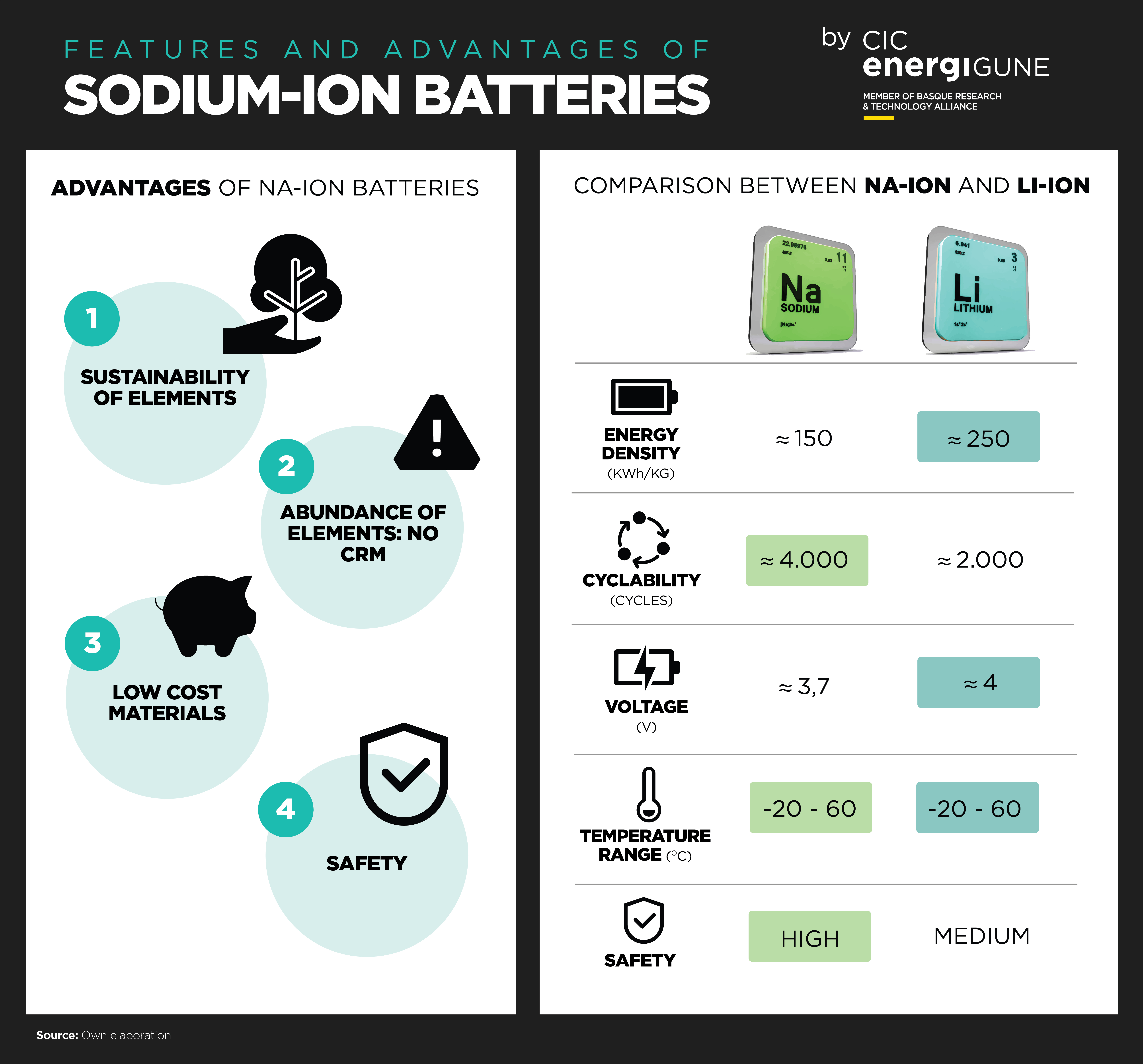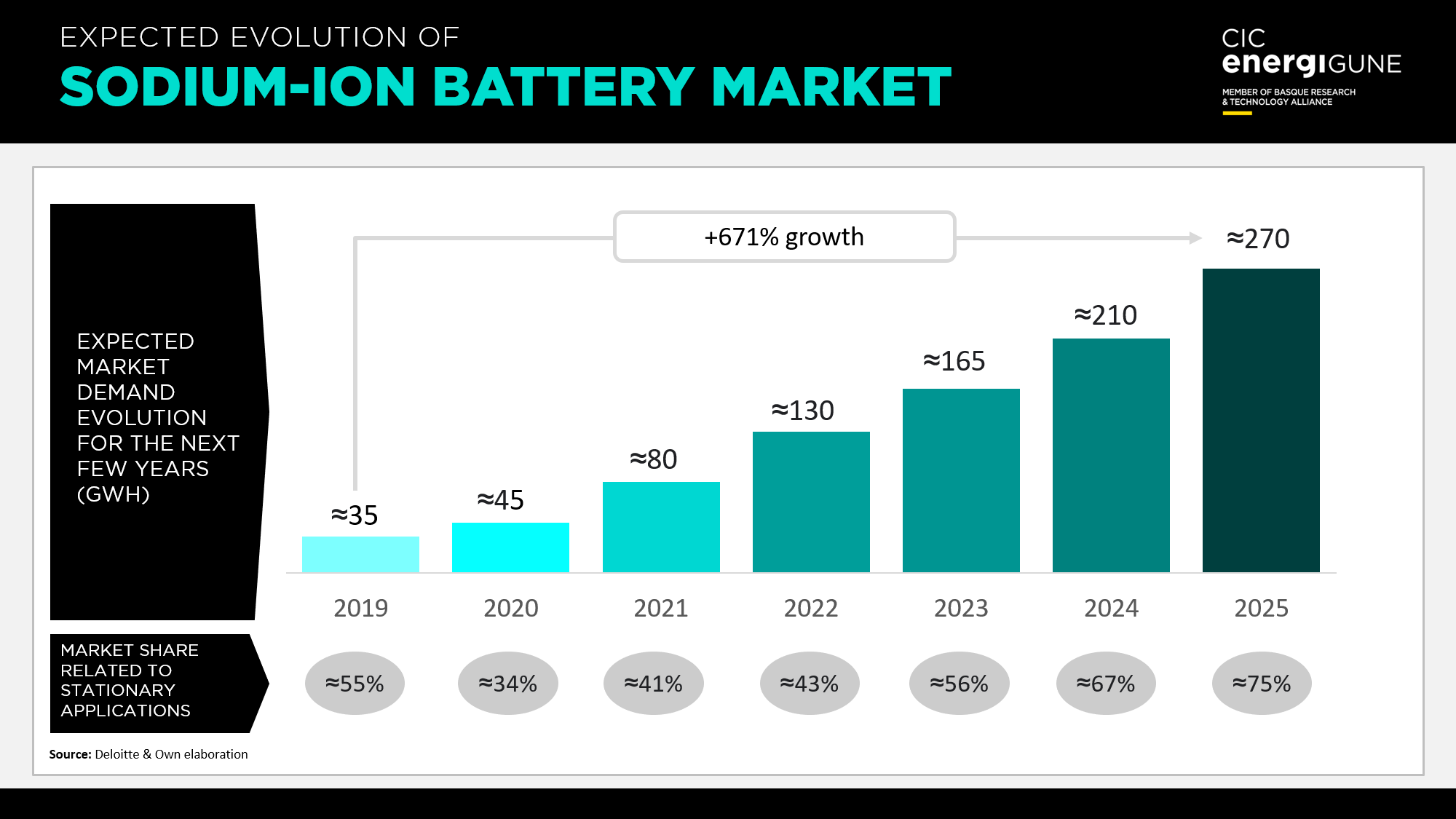This spectacular data is directly linked to the coming wave of renewables (expected to increase by 250 times, reaching 2,000 GWh by 2040), but, as might be expected, the main source of battery demand is the sector associated to the electric vehicle.
The fact that the demand for energy for stationary storage will grow the most, together with the complexities associated to the industrialization of lithium-ion batteries, makes it necessary to develop new battery technologies to complement the hegemonic lithium-ion batteries.
For this purpose, sodium-ion batteries are presented as a technology as valid as that based on lithium to supply the energy demand of such a demanding area as stationary storage (electric vehicle charging points, self-consumption, lighting, renewable energies...).
In order to understand the perfect harmony between the two technologies, it is important to first summarize the main strengths of sodium-ion batteries. Once these strengths are known, it will be easier to determine what challenges the industry will have to face and, in particular, how to overcome them.
STRENGTHS OF SODIUM-ION BATTERIES
1) Both lithium (Li) and sodium (Na) belong, within the periodic table, to the same group of alkaline metals. This means that they have very similar chemical, technological and performance properties, so that, in order to start industrializing the manufacture of this type of batteries, the infrastructures used for the production of lithium-ion batteries could be used. Thus, by maximizing the industrial production of this technology, the corresponding economies of scale would be achieved, minimizing to the maximum the great obstacle that the cost of industrialization represents.
2) The materials from which lithium-ion batteries are made are classified as critical. One of the main objectives set by Europe for sustainable development is the reduction in the use of this type of critical raw materials (CRM). Apart from being increasingly scarce, these raw materials are found in underdeveloped countries or countries in conflict, which use this market as a means of financing and enrichment. Sodium-ion batteries, on the other hand, use sustainable materials, low cost and abundant in nature.
3) Sodium-ion batteries, due to the chemical properties of their constituent elements, provide a low-cost, safe and, as we have already said, sustainable energy storage system. All these attributes make it, for example, a very suitable technology for the storage of renewable energies. The properties of lithium-ion batteries, for their part, are ideal for electric vehicles (largely thanks to their high energy density).
One of the main challenges facing sodium batteries is the need to develop the market for components. Today, only a few manufacturers - 2 or 3 suppliers worldwide - are in charge of transforming this raw material and giving it the right format for the battery industry. Currently, the European company E-lyte is one of the main players involved in sodium processing in Europe. However, it is sourced from Asian markets. Therefore, for the industrialization of this technology in Europe, it is necessary to have more and better European allies producing "Battery Grade" sodium.
What is clear from this is that, given the expected high demand for energy, the more alternatives there are on the market, the easier it is for them to complement each other to meet energy needs.
Therefore, although promising announcements have been made in recent months by international companies that are already working on technologies associated with sodium-ion batteries, further research is still needed to make them fully complementary to lithium-ion-based technologies. In this way, very competitive solutions capable of meeting the growing market demand in the different applications would be achieved.
As can be seen in the image below, the complementarity between the two technologies is promising. The development of sodium-ion technologies and their industrialization suggests that sodium batteries could reach where lithium batteries cannot, and vice versa.










